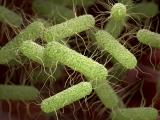May 20, 2002 (CIDRAP News) – Some people find frogs disgusting, but now a study of an illness outbreak in Mississippi suggests that frogs may be literally nauseating. The case-control study implicates contact with amphibians as a potential risk factor for infection with Salmonella enterica serotype Javiana.
In a search for risk factors, Padmini Srikantiah and colleagues did a case-control study of an outbreak of salmonellosis that occurred among children in Jackson, Miss., last summer. The findings were presented at the 51st Annual Epidemic Intelligence Service Conference in Atlanta in April.
The investigators identified 55 cases of S Javiana that occurred in Mississippians in August or September of 2001, according to the study abstract. For controls, they randomly selected two people matched by age and county with each case-patient, enrolling a total of 109. All S Javiana isolates were analyzed by pulsed-field gel electrophoresis (PFGE).
The case-patients had a median age of 24 months (range, 3 months to 70 years). Symptoms included fever in 86% and bloody diarrhea in 44%; nine patients were hospitalized, but none died. The PFGE analysis of 51 isolates yielded 18 distinct patterns, suggesting multiple sources of infection.
"Thirty (55%) case-patients reported exposure to amphibians, defined as owning, touching, or seeing an amphibian on one's property, compared with 30 (29%) controls (matched odds ratio 2.8, P=0.006)," the report states.
The report says S Javiana is the fifth most common Salmonella serotype found among humans nationwide, but the sources for human infection are "largely unknown." It also says that S Javiana is most common in the southeastern United States and matches the distribution of certain amphibians. The authors conclude, "Contact with amphibians and their environments may be a risk factor for human infection with SJ [S Javiana]. . . . Public health officials should consider amphibians along with reptiles as potential sources of salmonellosis, and promote hand washing after contact with amphibians to decrease the risk of infection with S Javiana," they conclude.
Craig W. Hedberg, PhD, an associate professor of environmental and occupational health at the University of Minnesota School of Public Health, commented to CIDRAP News that the finding, if confirmed, provides a reminder that food animals are not the only sources of Salmonella infections in humans. "When you live or grow produce in areas where there are a lot of reptiles and amphibians, there's a risk of Salmonella," he said.
Srikantiah P, Lay J, Crump J, et al. Plague o' frogs: outbreak of Salmonella Javiana infections—Mississippi, 2001. Presented at 51st Annual Epidemic Intelligence Service (EIS) Conference, Atlanta, Apr 22-26, 2002


















